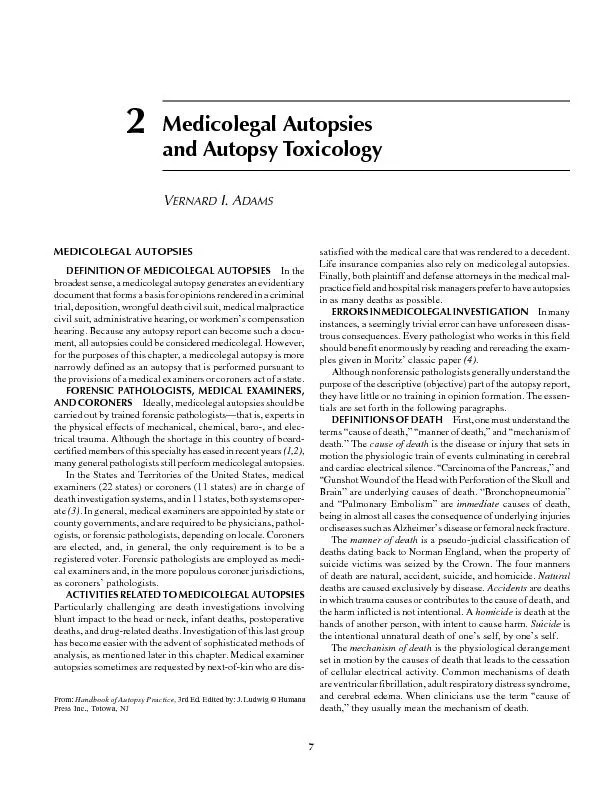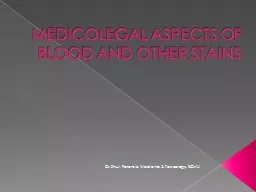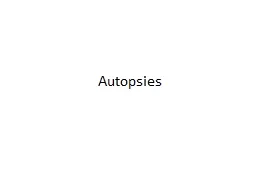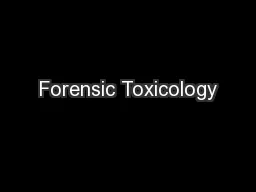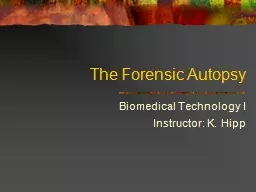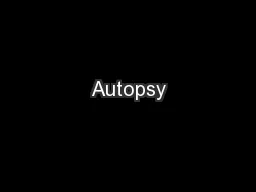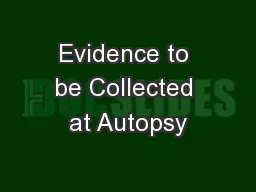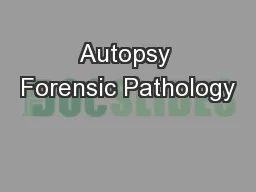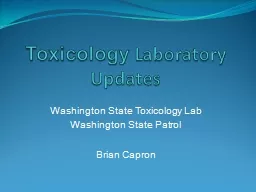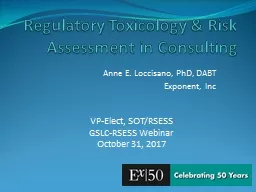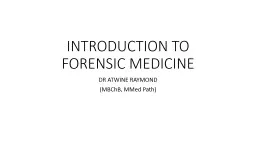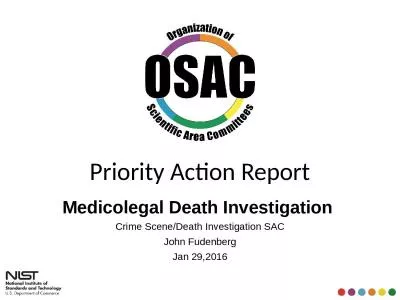PDF-/ MEDICOLEGAL AUTOPSIES AND AUTOPSY TOXICOLOGY
Author : briana-ranney | Published Date : 2016-05-12
Medicolegal Autopsiesand Autopsy Toxicology 2 Press Inc Totowa N I ADAMStrial deposition wrongful death civil suit medical malpracticenarrowly defined as an autopsy
Presentation Embed Code
Download Presentation
Download Presentation The PPT/PDF document "/ MEDICOLEGAL AUTOPSIES AND AUTOPSY TOX..." is the property of its rightful owner. Permission is granted to download and print the materials on this website for personal, non-commercial use only, and to display it on your personal computer provided you do not modify the materials and that you retain all copyright notices contained in the materials. By downloading content from our website, you accept the terms of this agreement.
/ MEDICOLEGAL AUTOPSIES AND AUTOPSY TOXICOLOGY: Transcript
Download Rules Of Document
"/ MEDICOLEGAL AUTOPSIES AND AUTOPSY TOXICOLOGY"The content belongs to its owner. You may download and print it for personal use, without modification, and keep all copyright notices. By downloading, you agree to these terms.
Related Documents

